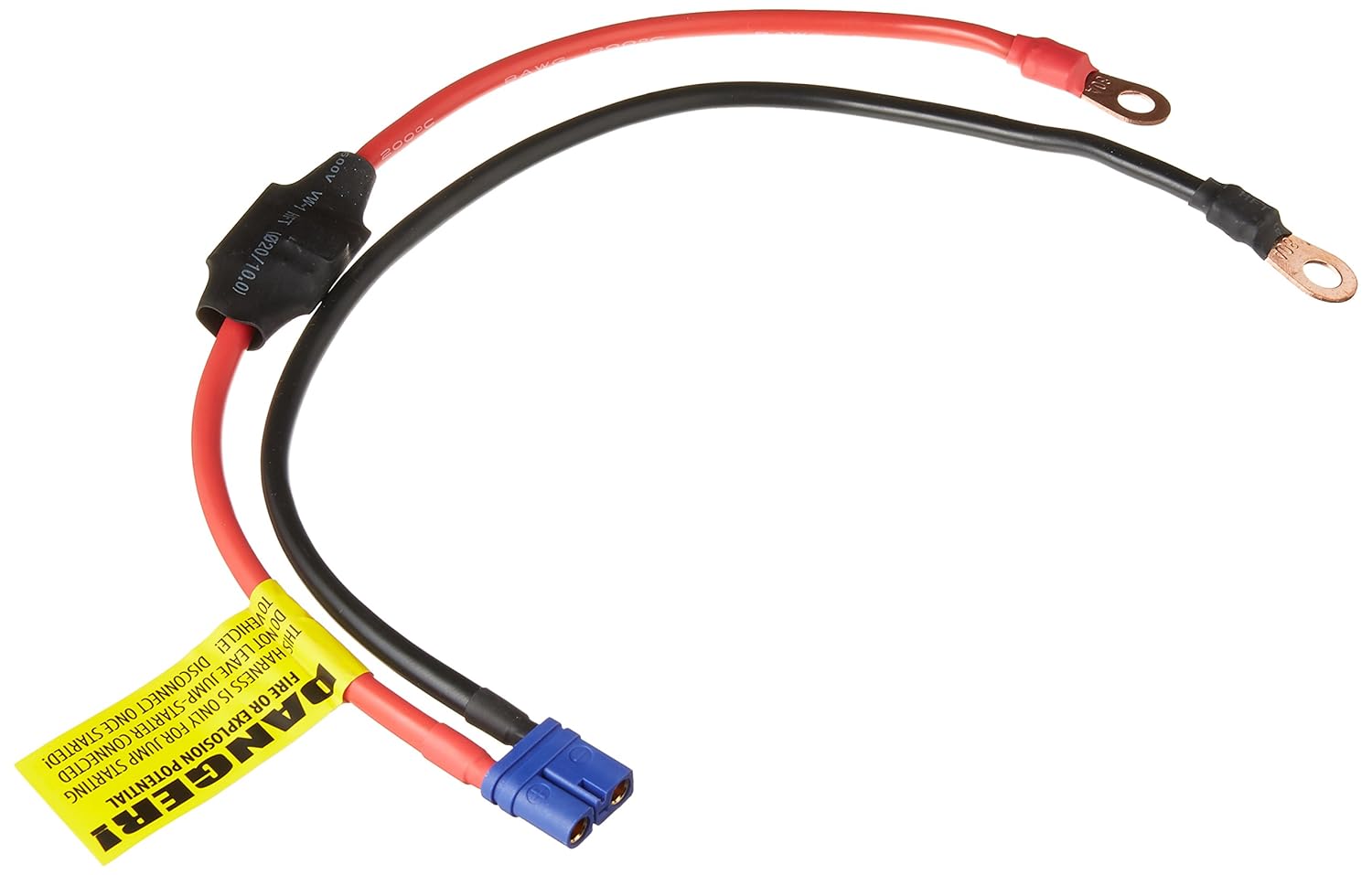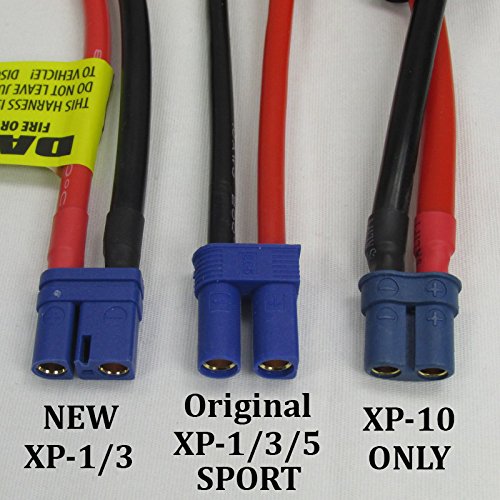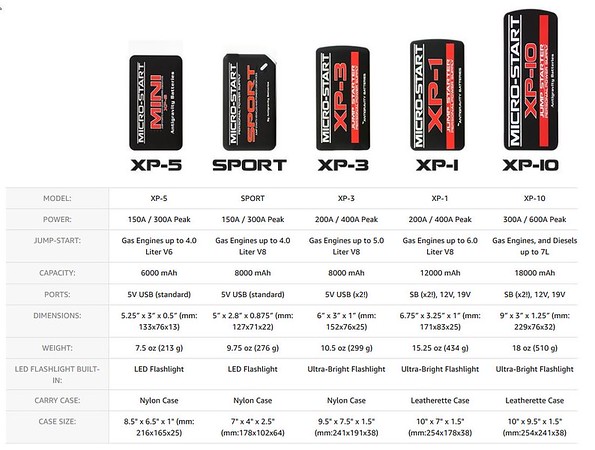RossKean
Well-known member
I have been looking at Lithium Ion booster packs (jump starters) to carry with me on the bike. (I posted about this recently as part of a reply in another thread but it got buried.) For me, one of these would serve a dual purpose.
They are compact and lightweight devices that are fully capable of starting your motorcycle (or even a full size car) if the battery is dead.
They have adequate capacity to serve as a charging device for electronics while on the road. This is especially attractive to me because I do a fair amount of motorcycle camping and there is always a multitude of items that need power (phone, tablet, e-reader, Bluetooth speaker, iPod, flashlights, camera batteries etc.). The booster pack can be recharged on the bike while riding. Or charged via 110V using an adaptor.
There are HUNDREDS of available devices out there - Amazon and eBay, not to mention a bunch of other retailers. I am looking for recommendation from someone who has one of these compact and highly portable units. rbentnail recommended one made by Antigravity (Model XP-3) in another thread.
https://www.amazon.com/dp/B00GT2FUB2?tag=vs-powersports-convert-amazon-20
The same company makes an XP-10 with higher capacity (and price).
https://www.amazon.com/dp/B00MQ5Z5F2?ref=emc_b_5_i
Antigravity apparently also makes a pretty neat small compressor for inflating tires.
https://www.amazon.com/Antigravity-Batteries-AG-MSA-9-Tire-Inflator/dp/B00VM7LB9Y/ref=pd_sim_263_2?_encoding=UTF8&pd_rd_i=B00VM7LB9Y&pd_rd_r=87ETMY0RT2WYZWMEN5B5&pd_rd_w=8Uja4&pd_rd_wg=3UeV5&psc=1&refRID=87ETMY0RT2WYZWMEN5B5
A couple of points:
Apparently, there have been issues with sellers providing counterfeit knockoffs that do not perform like the original brand (Antigravity apparently had this issue).
Also, you have to be very careful in choosing based upon capacity in ampere hours. The capacity will tell you how long you can crank an engine or how many electronic devices you might be able to charge. Capacity for a MC battery may be 12 ampere-hours @12 volts (6 cells). Some of these devices are rated at a given amp-hr based upon a single cell (3.7 V). It is important to know what you are getting!! Lithium batteries for automotive applications are typicallyfour three series cell units so a 10 ampere-hour device might only be 2.5 3.3 amp-hr @ 12 V nominal. Watt-hour rating would be more useful and unambiguous.
For my application, I am looking for the following:
High quality lithium battery - a lot of crap out there although generally better than a few years ago.
15 ampere-hour capacity minimum (@ 3.7 V)
2 x USB outlets (high capacity)
Cigarette lighter socket outlet (to power low wattage inverter to run camera battery charger or AA/AAA battery charger) Unless, of course, it has a 110VAC (low capacity) as part of the package.
SAE output (or adaptor) to power tire inflation pump or other devices.
SAE input to charge the booster pack from the bike
Alternate input to charge via 110 VAC
Booster cable output (of course)
"Adequate" CCA. Whatever that might be (200 A?, 600 A?)
Display providing voltage or state-of-charge would be nice
Smaller and lighter is better although capacity (and possibly robustness) will come at the expense of larger size and weight.
Need to have all of the appropriate fittings and adaptors.
The Antigravity XP-10 covers most of this but at a cost of $170 or so. At least they have a reasonable reputation...
These things are a great idea, whether you need them as a portable power source or not. I am going to get one but wanted to see what others have had and would recommend.
They are compact and lightweight devices that are fully capable of starting your motorcycle (or even a full size car) if the battery is dead.
They have adequate capacity to serve as a charging device for electronics while on the road. This is especially attractive to me because I do a fair amount of motorcycle camping and there is always a multitude of items that need power (phone, tablet, e-reader, Bluetooth speaker, iPod, flashlights, camera batteries etc.). The booster pack can be recharged on the bike while riding. Or charged via 110V using an adaptor.
There are HUNDREDS of available devices out there - Amazon and eBay, not to mention a bunch of other retailers. I am looking for recommendation from someone who has one of these compact and highly portable units. rbentnail recommended one made by Antigravity (Model XP-3) in another thread.
https://www.amazon.com/dp/B00GT2FUB2?tag=vs-powersports-convert-amazon-20
The same company makes an XP-10 with higher capacity (and price).
https://www.amazon.com/dp/B00MQ5Z5F2?ref=emc_b_5_i
Antigravity apparently also makes a pretty neat small compressor for inflating tires.
https://www.amazon.com/Antigravity-Batteries-AG-MSA-9-Tire-Inflator/dp/B00VM7LB9Y/ref=pd_sim_263_2?_encoding=UTF8&pd_rd_i=B00VM7LB9Y&pd_rd_r=87ETMY0RT2WYZWMEN5B5&pd_rd_w=8Uja4&pd_rd_wg=3UeV5&psc=1&refRID=87ETMY0RT2WYZWMEN5B5
A couple of points:
Apparently, there have been issues with sellers providing counterfeit knockoffs that do not perform like the original brand (Antigravity apparently had this issue).
Also, you have to be very careful in choosing based upon capacity in ampere hours. The capacity will tell you how long you can crank an engine or how many electronic devices you might be able to charge. Capacity for a MC battery may be 12 ampere-hours @12 volts (6 cells). Some of these devices are rated at a given amp-hr based upon a single cell (3.7 V). It is important to know what you are getting!! Lithium batteries for automotive applications are typically
For my application, I am looking for the following:
High quality lithium battery - a lot of crap out there although generally better than a few years ago.
15 ampere-hour capacity minimum (@ 3.7 V)
2 x USB outlets (high capacity)
Cigarette lighter socket outlet (to power low wattage inverter to run camera battery charger or AA/AAA battery charger) Unless, of course, it has a 110VAC (low capacity) as part of the package.
SAE output (or adaptor) to power tire inflation pump or other devices.
SAE input to charge the booster pack from the bike
Alternate input to charge via 110 VAC
Booster cable output (of course)
"Adequate" CCA. Whatever that might be (200 A?, 600 A?)
Display providing voltage or state-of-charge would be nice
Smaller and lighter is better although capacity (and possibly robustness) will come at the expense of larger size and weight.
Need to have all of the appropriate fittings and adaptors.
The Antigravity XP-10 covers most of this but at a cost of $170 or so. At least they have a reasonable reputation...
These things are a great idea, whether you need them as a portable power source or not. I am going to get one but wanted to see what others have had and would recommend.
Last edited by a moderator:






























